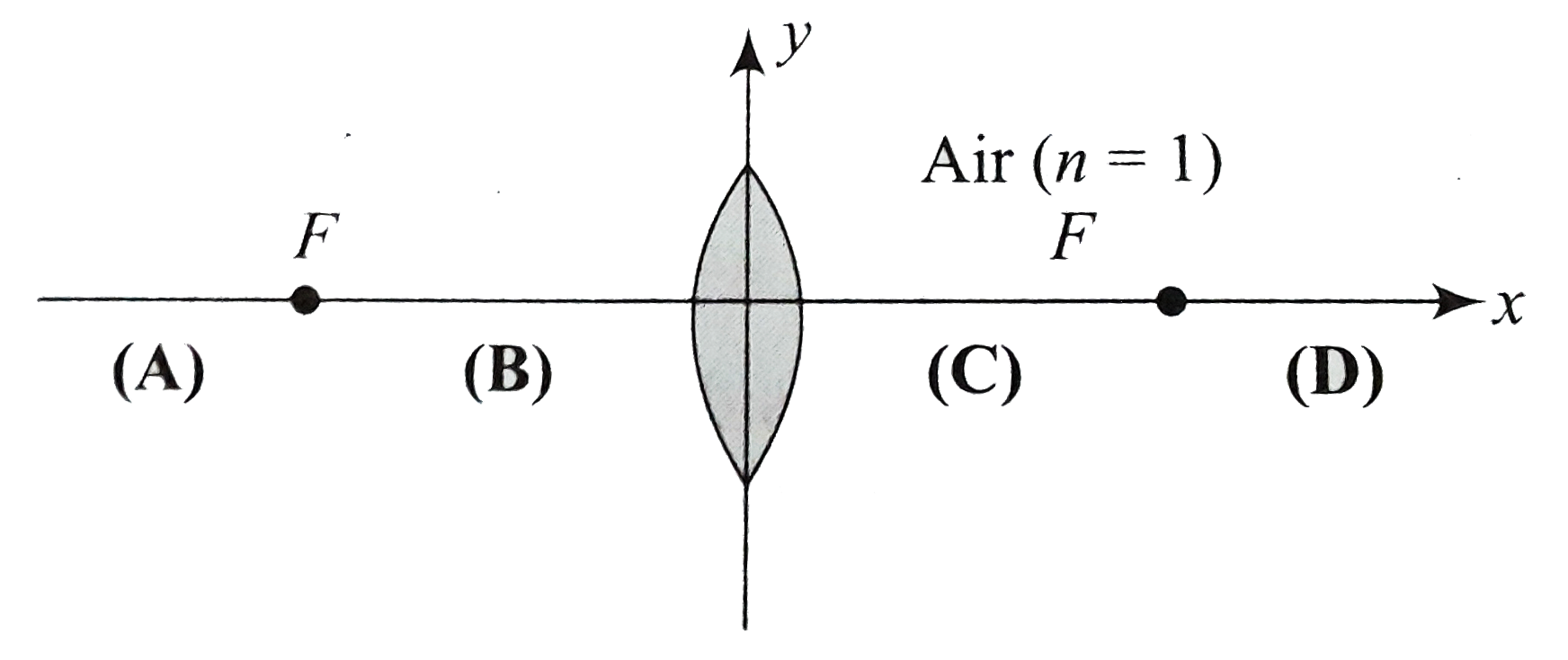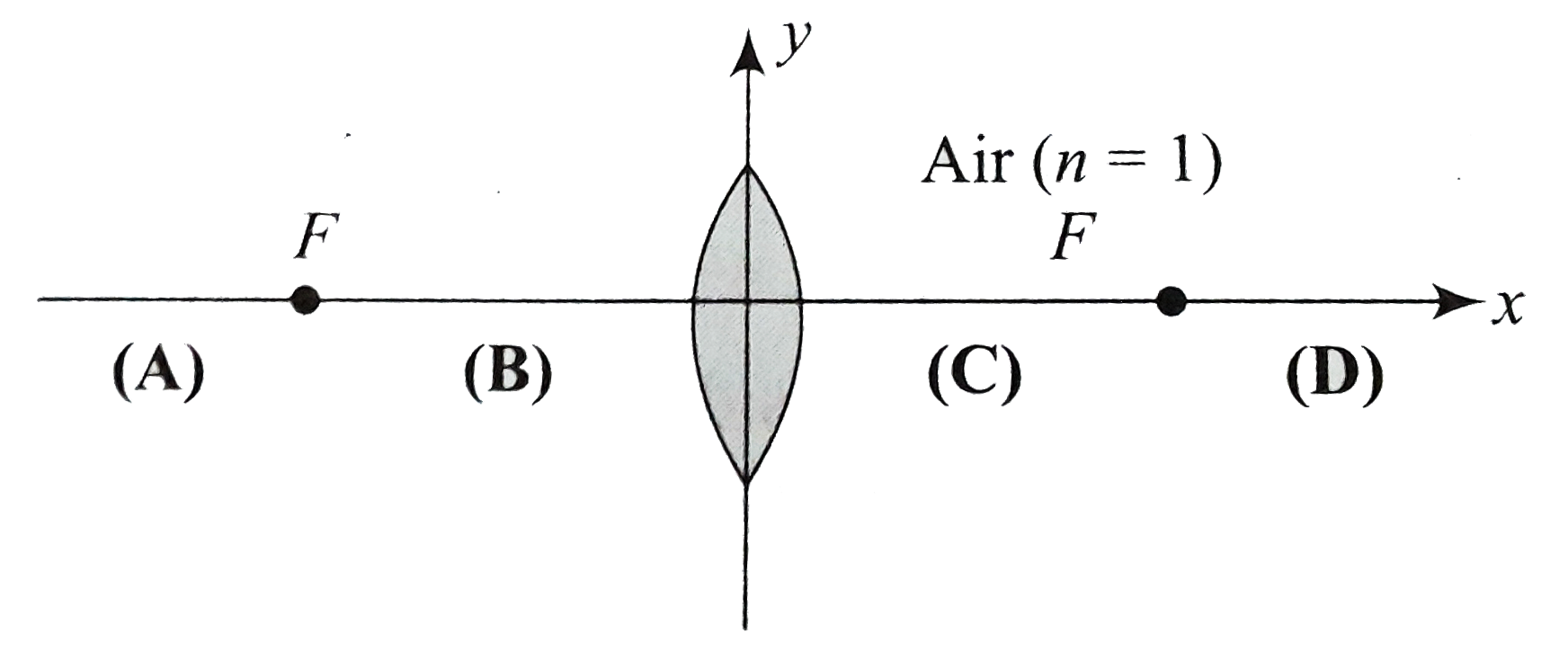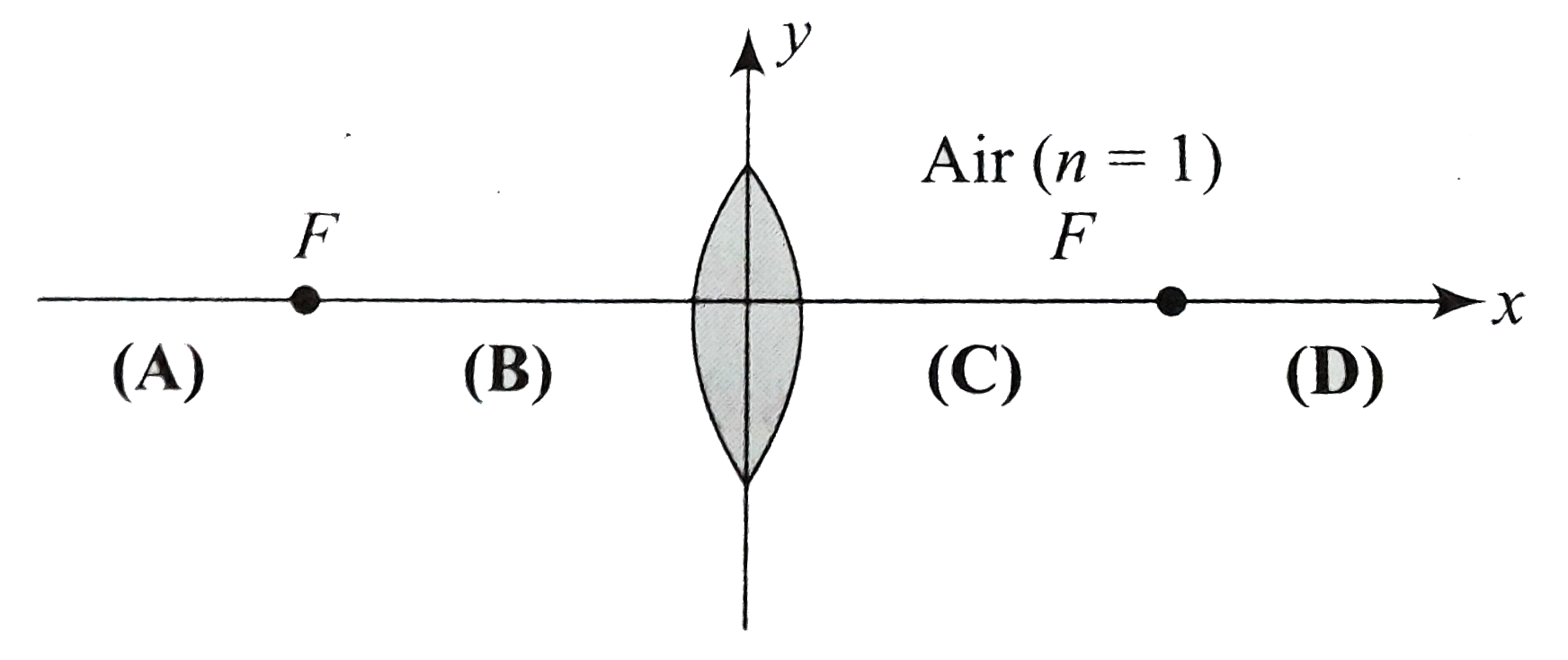This question concerna a symmetrical lens shown, along with its two focal points. It is made of plastice with n=1.2 and has focal length f. Four different regions are shown:
Here,
A. −∞x<−f B. −f<x<0
C. 0<x<f D. f<x<∞

Q. If an object is placed somewhere region (A), in which region does the image appear ?
A
B
C
D
The correct Answer is:d
From the formula of equivalent focal length of thin lenses in contact, we get
1F=1f1+1f2=1f−13forF=3f2
Topper's Solved these Questions
- GEOMETRICAL OPTICSBOOK - CENGAGE PHYSICSCHAPTER - GEOMETRICAL OPTICSEXERCISE - Integer
15 Videos
- GEOMETRICAL OPTICSBOOK - CENGAGE PHYSICSCHAPTER - GEOMETRICAL OPTICSEXERCISE - Archives
7 Videos
- GEOMETRICAL OPTICSBOOK - CENGAGE PHYSICSCHAPTER - GEOMETRICAL OPTICSEXERCISE - Assertion-Reasoninig
2 Videos
- FRICTIONBOOK - CENGAGE PHYSICSCHAPTER - FRICTIONEXERCISE - QUESTION BANK
1 Videos
- GRAVITATIONBOOK - CENGAGE PHYSICSCHAPTER - GRAVITATIONEXERCISE - Question Bank
39 Videos
Similar Questions
This question concerna a symmetrical lens shown, along with its two focal points. It is made of plastice with n=1.2 and has focal length f. Four different regions are shown:
Here,
A. −∞x<−f B. −f<x<0
C. 0<x<f D. f<x<∞

Q. If incident rays are converging, then in which region does the image appear?
View SolutionThis question concerns a symmetrical lens shown, along with its two focal points. It is made of plastic with n=1.2 and has focal length f. Four different regions are shown:
A. −∞<x<−f
B. −f<x<0
C. 0<x<f
D. f<x<∞
A second lens is now placed adjacent to the first in contact with it. The new lens is concave, with a focal length f=−3f. In what region does the focal length of the two-lens system lie? Treat the lenses as thin.

View Solution
Knowledge Check
This question concerna a symmetrical lens shown, along with its two focal points. It is made of plastice with n=1.2 and has focal length f. Four different regions are shown:
Here,
A. −∞x<−f B. −f<x<0
C. 0<x<f D. f<x<∞

Q. If incident rays are converging, then in which region does the image appear?AABBCCDDThis question concerna a symmetrical lens shown, along with its two focal points. It is made of plastice with n=1.2 and has focal length f. Four different regions are shown:
Here,
A. −∞x<−f B. −f<x<0
C. 0<x<f D. f<x<∞

Q. A second lens is now placed adjacent to the first in contact with it. The new lens is concave, with a focal length f=−3f. What is the focal length of the two-lens system? Treat the lenses as thin.AABBCCDDLet f(x) be defined as
f(x)={sin2x0<x<π6px+qπ6<x<1, If f and f' are continuous then [p,q) is equal toA(1√2,1√2)B(1,1√2+π6)C(1,√32−π6)Dnone of these
Find the inverse of each of the following functions :
f(x)=⎧⎪⎨⎪⎩x,−∞<x<1x2,1≤x≤42x,4<x<∞
View SolutionFind the inverse of each of the following functions :
f(x)=⎧⎪⎨⎪⎩x,−∞<x<1x2,1≤x≤42x,4<x<∞
View SolutionIf E and F are independent events such that 0<P(E)<1and0<P(F)<1, then
View SolutionIf E and F are independent events such that 0<P(E)<1and0<P(F)<1, then
View SolutionIf E and F are independent events such that 0 lt P(E) lt 1 and 0 lt P(F) lt 1, then
View Solution
